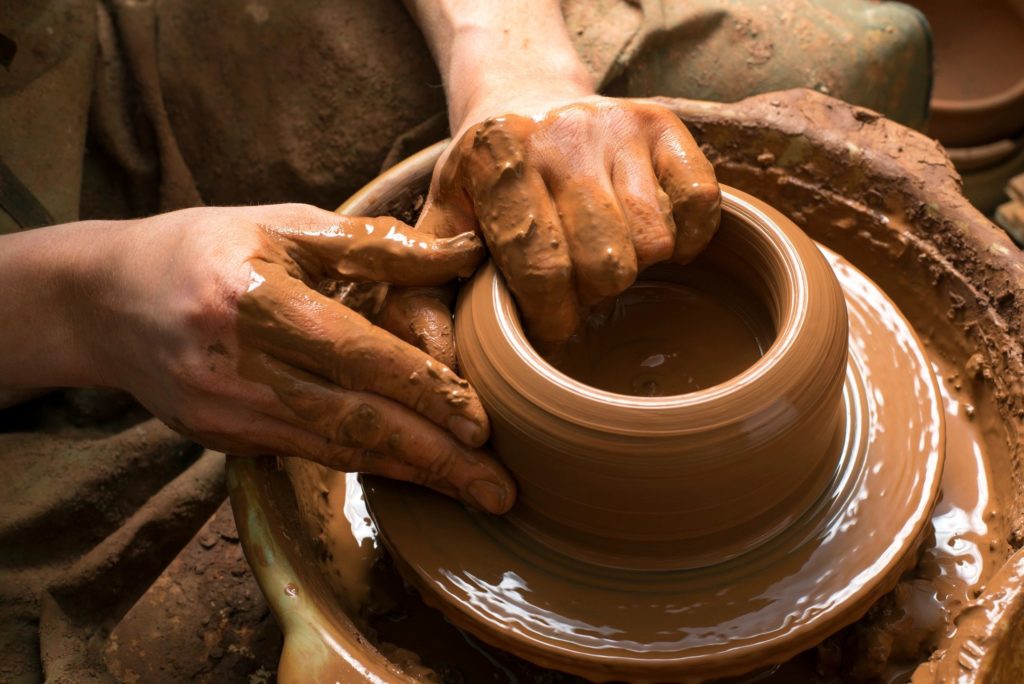
What 50 Pounds of Pottery Can Teach Us About Success
Written by Calvin Sun
There’s a great anecdote from the book, “Art and Fear“, that illustrates the importance of focusing on quantity. The premise of the story is that on the first day of class, a ceramics teacher divides his students into two groups.
All the students on the left side of the studio, he said, would be graded solely on the quantity of work they produced, and all those on the right solely on quality. The grading rubric was simple: on the final day of class he would bring in a scale and weigh the work of the “quantity” group. Fifty pounds of pots earned an “A”, forty pounds a “B”, thirty pounds a “C”, and so on. Those in the “quality” group, however, needed to produce only one perfect pot to get an “A”.
On the final day of class, a curious fact emerged: the works of highest quality were all produced by the group being graded for quantity. It appeared that while the “quantity” group was busily churning out piles of work and learning from their mistakes, the “quality” group had sat around theorizing about perfection, and in the end had little more to show for their efforts than “grandiose theories and a pile of dead clay”.
The key takeaway here is that if you want to achieve a goal, especially as a beginner, repetitions matter and aiming for perfection usually leads to “paralysis by analysis”. You should, of course, pay attention to the details and get constructive feedback from someone who can coach and mentor you along the way. However, the point is that you should avoid over-analyzing things to the point where you never make a decision or take any action.
When trying to master any craft or achieving any goal, it really is about quantity of “reps” and learning from mistakes… not trying to “nail it” and achieve perfection on your first attempt.
3,000 One-on-One Personal Training Sessions Later…
I’ll share a quick story from my own career that you might find relevant.
In 2006, I got my first job in the fitness industry for a big commercial gym chain called LA Fitness. I was 20 years old, newly certified, and literally quite hungry as I was a broke college student. I unknowingly followed the same quantity-based approach to success described above. As a new trainer, I took on any client who was willing to work with me. I trained a minimum of 10 one-on-one sessions a day, 5 days a week, for almost two years. That’s about 50 to 60 individual personal training sessions a week and I logged about 3,000 training sessions in that first year alone.
Much like the aforementioned pottery students, I was able to learn from my mistakes very quickly given the sheer volume of clients I was training in any given week. At the same time, I was taking a full-time college course load, pursuing more training certifications, and reading every book I could get my hands on in my free time. I was able to apply what I learned right away and I quickly figured out what worked and what didn’t. My clients got better results than those who worked with trainers who “knew better” and were still using outdated training methodologies or were too rigid in their approaches with their clients.
3,000 training sessions later, in the fall of 2007, I was voted “Best Trainer” in the San Diego region among all LA Fitness locations. Bear in mind, I had started with my very first paying client just over a year before that. It was a surreal moment to beat out a dozen other trainers who were older, more experienced, and considered the best at their respective gyms.
This period of “getting my reps in” was one of the best things to ever happen to me. This quantity-based approach effectively compressed three years of learning and work experience into one very intense year. If I had focused on creating “the one perfect program” to rule them all, I would have had my own pile of dead clay and I probably wouldn’t have the career that I have today.
So my question to you is this, what in your life is currently a pile of dead clay? How can you start getting your practice reps in?
If you’re aspiring to become a great coach, athlete, business owner, or excel at anything for that matter, you can’t fear failure or be afraid of making a mistake. In fact, you have to embrace failure as part of the process that will ultimately make you great at whatever you choose to pursue. Focus on the repetitions that come before the success. Keep in mind that you’re going to make hundreds of crappy looking ceramic pots before you produce your masterpiece.
“It seems that the necessary thing to do is not to fear mistakes, to plunge in, to do the best that one can, hoping to learn enough from blunders to correct them eventually.” – Abraham Maslow
Also Check Out…
The Problem With Like-Minded People
5 Key Ideas From Dr. Andy Galpin’s Presnetation On “Genetics vs. Performance”